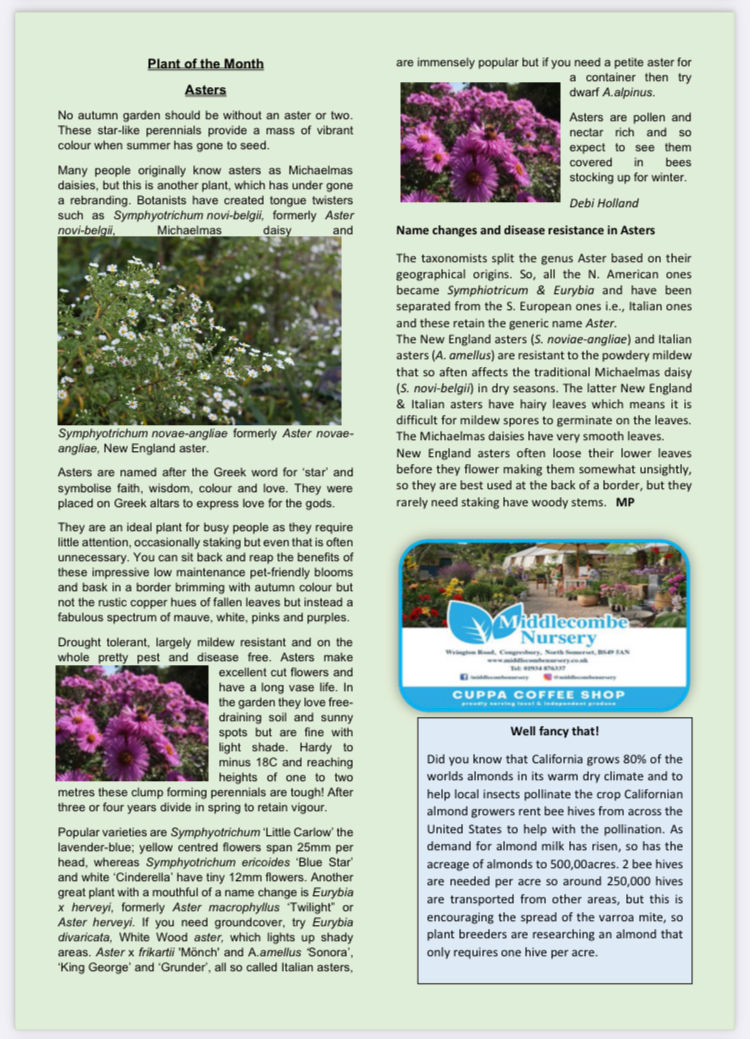Fagus Times Asters
- Debi Holland

- Aug 30, 2021
- 2 min read

No autumn garden should be without an aster or two. These star-like perennials provide a mass of vibrant colour when summer has gone to seed.
Many people originally know asters as Michaelmas daisies but this is another plant, which has under gone a rebranding. Botanists have created tongue twisters such as Symphyotrichum novi-belgii, formerly Aster novi-belgii, Michaelmas daisy and Symphyotrichum novae-angliae formerly Aster novae-angliae, New England aster.
Asters are named after the Greek word for ‘star’ and symbolise faith, wisdom, colour and love. They were placed on Greek altars to express love for the gods.
They are an ideal plant for busy people as they require little attention, occasionally staking but even that is often unnecessary. You can sit back and reap the benefits of these impressive low maintenance pet-friendly blooms and bask in a border brimming with autumn colour but not the rustic copper hues of fallen leaves but instead a fabulous spectrum of mauve, white, pinks and purples.

Drought tolerant, largely mildew resistant and on the whole pretty pest and disease free. Asters make excellent cut flowers and have a long vase life. In the garden they love free-draining soil and sunny spots but are fine with light shade. Hardy to minus 18 and reaching heights of one to two metres these clump forming perennials are tough! After three or four years divide in spring to retain vigour.
Popular varieties are Symphyotrichum ‘Little Carlow’ the lavender-blue; yellow centred flowers span 25mm per head, whereas Symphytrichum ericoides ‘Blue Star’ and white ‘Cinderella’ has tiny 12mm flowers. Another great plant with a mouthful of a name change is Eurybia x herveyi, formerly Aster macrophyllus ‘Twilight” or Aster herveyi. If you need ground cover try Eurybia divaricae, White Wood aster, which lights up shady areas. Aster x frikartii 'Mönch' and A.amellus ‘Sonora’ ‘King George’ and ‘Grunder’, Italian asters are immensely popular but if you need a petit aster for a container then try dwarf A.alpinus.
Asters are pollen and nectar rich and so expect to see them covered in bees stocking up for winter.

Fagus Times is the monthly online magazine for North Somerset's Fagus Gardening Club. Proud to have been asked to contribute a monthly plant article by club President Mary Payne MBE.
All photos © Debi Holland 2021






Comments